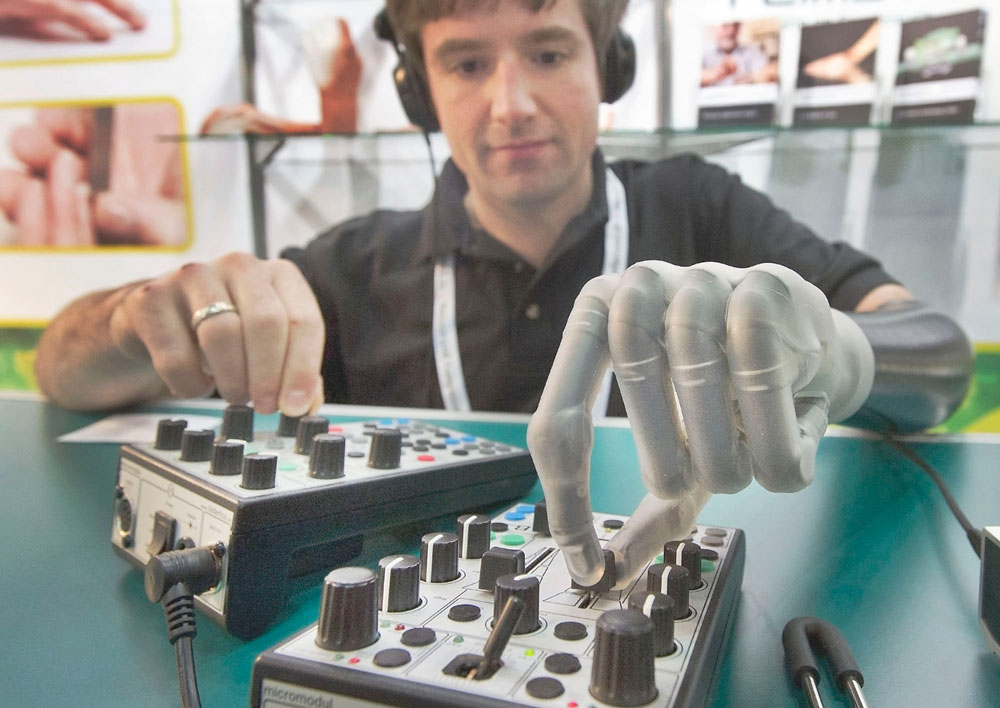Bertolt Meyer is used to being viewed as not fully human. Born with a stump where his left hand should have been, he spent his childhood wearing a hook connected to an elaborate pulley and harness. "To open the hook and grasp things I had to flex my shoulders like this," he says, striking a he-man pose. "The harness was very uncomfortable. I was always sweating."
Even when, at 19, Meyer exchanged his body-powered hook for a myoelectric prosthesis with a more realistic plastic hand, he kept his disfigured left arm hidden from view. "It wasn't simply a question of aesthetics," he explains, proffering the plastic hand, now grubby and discolored with use. "You have to understand, this is a stigma. People think its weird. You walk around with a sense of shame."
Today, that shame is gone. In 2009 Meyer, a social psychologist at the University of Zurich, was fitted with an i-limb, a state-of-the-art bionic prosthesis developed by a Scottish company, Touch Bionics, that comes with 24 different grip patterns. To select a new suite of gestures, Meyer simply taps an app on his iPhone.



















With your current subscription plan you can comment on stories. However, before writing your first comment, please create a display name in the Profile section of your subscriber account page.